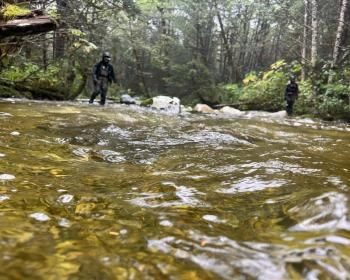
On March 8, 2012 several hundred Indigenous people began a two week march across Ecuador to call attention to their protest of a large-scale open-pit copper mine. Ecuacorriente, a Chinese company, has been authorized by the Correa government to develop a mine near El Pangui, Zamora-Chinchipe Province, in the southern part of the country.
Indigenous Rights Are a Climate Solution!
From November 10 to November 21, 2025, the 2025 United Nations Climate Change Conference, also known as the Conference of the Parties to the United Nations Framework Convention on Climate Change (UNFCCC), commonly referred to as COP30, will take place in Belém, the capital of the state of Pará, in Brazil’s lower Amazon region.
Os direitos Indígenas são uma solução climática!
De 10 a 21 de novembro de 2025, será realizada em Belém, capital do estado do Pará, na região do baixo Amazonas, no Brasil, a Conferência das Nações Unidas sobre Mudanças Climáticas 2025, também conhecida como Conferência das Partes (COP30) da Convenção-Quadro das Nações Unidas sobre Mudanças Climáticas (UNFCCC).
By Morne Pietersen, Radio Station Manager
A local community radio station, Eden FM, is playing a pivotal role in preserving the cultural heritage and history of the Klein Karoo region through two distinct but interconnected research projects. The initiatives, undertaken with support from Cultural Survival’s Community Media Grant Fund, documented Indigenous Traditional Knowledge and the personal stories of forced removals under the apartheid-era Group Areas Act.
By Sandra Peláez (CS Intern)
By Georges Theodore Dougnon (Dogon, CS Staff)
Across the globe, Indigenous youth are rising as powerful leaders in the fight against climate change, combining ancestral knowledge with innovative action to protect their lands, cultures, and futures. Through the Cultural Survival Indigenous Youth Fellowship, young leaders from Kenya, the Democratic Republic of Congo, and Bangladesh have designed and led projects that not only address urgent environmental challenges but also strengthen community resilience and intergenerational connections.
By Bijo Thomas, Radio Mattoli Station Director
By Lucas Kasosi (Maasai, CS Fellow)